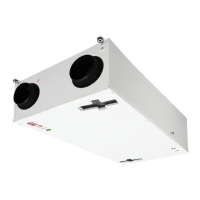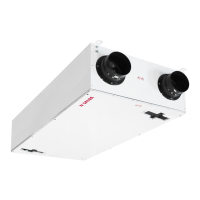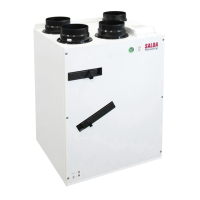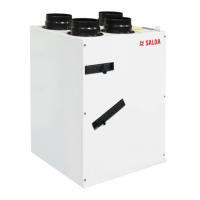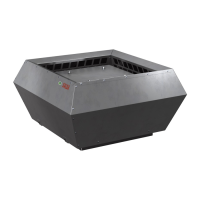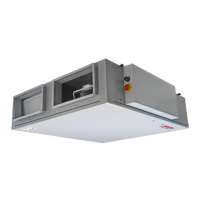52 | EN SMARTY v2023.2
10.6. ALARM INDICATION OUTPUT
By default, indication output is congured to indicate if any type of unit’s alarm (A or B) is triggered. It is possible to recongure output to indicate
triggered only B type alarm, only:
• In CONFIGURATION window select ONLINE CONFIGURATION EXTENDED and press OK on warning. Wait for the device to switch in conguration mode.
• Change Y1 with value A - ALARM INDICATION OUTPUT, B - ALARM INDICATION OUTPUT (depending on preferred indication function).
• Press APPLY – RESTART DEVICE button and wait for conguration to be applied. After conrmation of successful device activation press DONE.
10.7. REMOTE CONTROLLER AND KNX ROOM SENSORS
• In CONFIGURATION window select ONLINE CONFIGURATION BASIC and press OK on warning. Wait for the device to switch in conguration mode.
To congure remote controller:
• Set SELECTION FOR ROOM OPERATOR UNIT POS8 parameter with value POS8.4420 or POS8.4440 (depending on remote controller type).
To congure QMX3.P30 room sensor:
• Set SELECTION FOR ROOM SENSOR QMX3.P30 as ACTIVE.
To congure QMX3.P40 room sensor:
• Set SELECTION FOR ROOM SENSOR QMX3.P40 as ACTIVE.
To congure QMX3.P70 room sensor:
• Set SELECTION FOR ROOM SENSOR QMX3.P70 as ACTIVE.
• Press APPLY – RESTART DEVICE button and wait for conguration to be applied. After conrmation of successful device activation, press DONE.
11. OPERATING THE UNIT
The air handling unit can be controlled via POS8 remote control panel or ABT Go application. The unit have three dierent control modes:
• AUTO – operating modes are controlled via time switch program which changes between operating modes. Time switch program can be set by
user.
• MANUAL – operating modes are switched manually by user.
• TEMPORARY – control mode used for special operating modes (Fan boost, Fire place). These operating modes can be activated for a limited,
congurable time.
Four dierent operating modes can be selected when unit is in MANUAL control mode:
• COMFORT – used when building is occupied and the system operates to the needs of the user.
• ECONOMY – used when the building is occupied but the system operates saving energy.
• UNOCCUPIED – used when building is unoccupied and only with the needed most essential settings of the system.
• PROTECTION – this mode switches the system into o where the fans no longer run.
More advanced details of operating and control modes can be found in Air Handling unit’s controller (S300) manual, section
"APPLICATION FUNCTIONALITIES". Follow the link on the last page of this document.
If the unit is going to be started for the rst time be aware to follow instructions on section "OPERATIONS PRIOR FIRST
START".
12. POSSIBLE FAULTS AND TROUBLESHOOTING
FAILURE CAUSE EXPLANATION / CORRECTIVE ACTIONS
The unit is not operating
No supply voltage
Check whether the device is connected to the
power network.
The protection device is o or a current
leakage relay is active (if installed by the
installer)
Switch on only if the unit condition has been
evaluated by a qualied electrician. If the
system failed, the failure MUST BE rectied
prior to switching the system on.
The air supply heater or pre-heater is not
operating or malfunctioning (if installed)
Too low airow in air ducts activates
automatic protection
Check if the air lters are not clogged.
Check if the fans are rotating.
Manual safety device is activated
Possible heater or unit failure. MUST contact
the servicing sta for failure detection and its
elimination.
Too low air ow at rated fan speed Clogged supply and/or extract air lter(s) Filter replacement needed
The lters are clogged and no message is
shown on the remote control
Wrong time in lter timers or their switch is
broken, or its pressure is set improperly
Shorten lter timer time till the message of
clogged lters appears or replace the pressure
switch of the lters, or set their proper pressure.
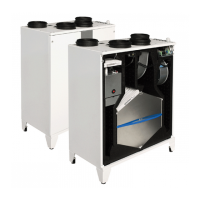
